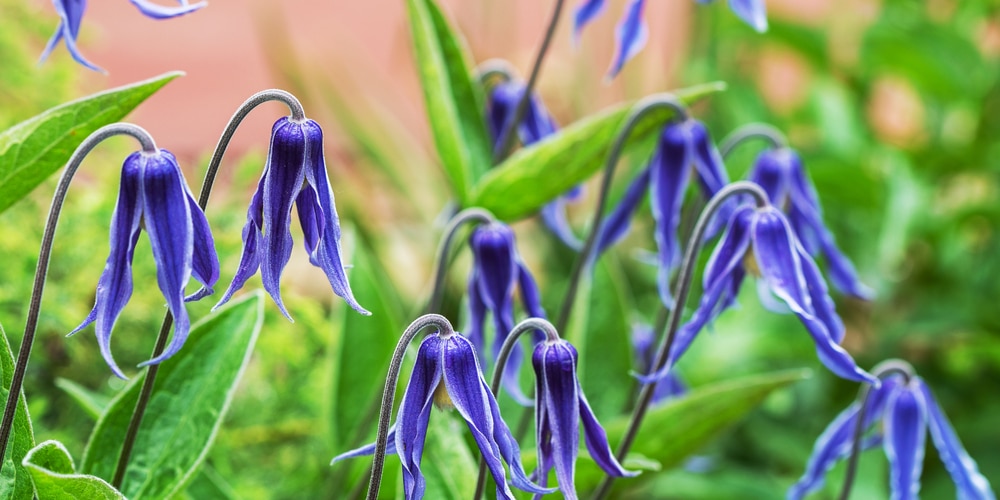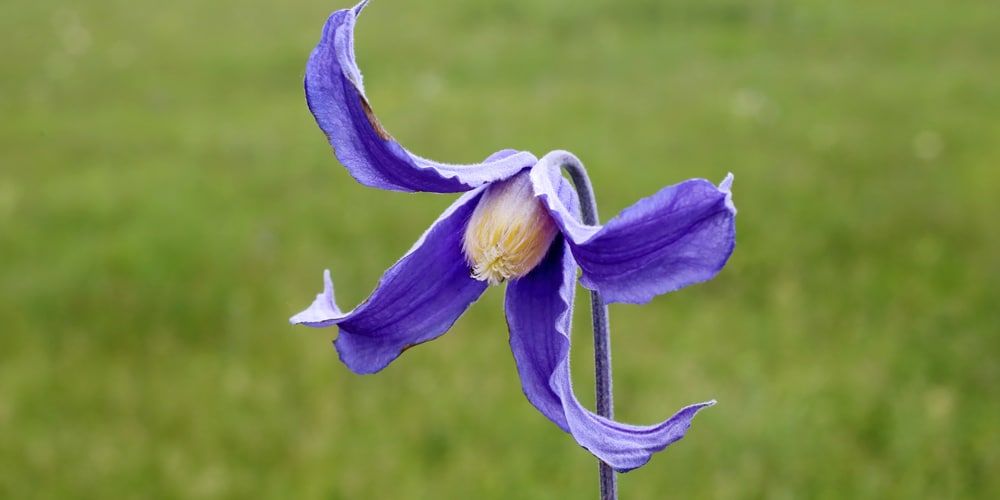A bell-shaped flower as your garden’s centerpiece is an excellent way to bring life and color to any backyard. The Clematis Roguchi is among the most beautiful flowering plants, and it’s perfect for those who want a low-maintenance plant.
This climbing plant is perfect for adding a touch of elegance to any garden.
| Botanical Name |
Clematis integrifolia Rooguchi |
| Common Name | Clematis Roguchi |
| Plant Type | Perennial |
| Flower Color | Purple |
| Size When Mature | 72 Inches |
| Bloom Time | Late Spring to Summer |
| Sun Requirements | Partial to Full Sun |
| USDA Hardiness Zones | 5-9 |
| Soil PH Range | 4.5-9.0 |
| Soil Type | Acidic, Neutral, Alkaline, Well-draining |
| Water Needs |
Low-Medium |
| Native Area | Japan |
What You Need to Know About Clematis Roguchi
Originating in the island nation of Japan, this plant is a beautiful flower that has been beloved by gardeners for centuries. This plant is a climber, and it is often seen growing up on the sides of buildings or trellises. However, it can also be grown in pots and containers. The climbing plant can reach heights of up to 72 inches.
The leaves of the plant are a deep green, with serrated edges that give them a jagged appearance. The leaves are arranged in pairs along the stems and often have a downy texture.
The flowers are a deep purple color and have a bell-shaped bloom. They typically bloom from late spring to summer and have a sweet fragrance that attracts bees and other pollinators.
This plant is easy to care for, and it is relatively low-maintenance. Making it the perfect plant for beginner gardeners.
How to Care for Clematis Roguchi
Here’s everything you need to know about growing and caring for a thriving Clematis Roguchi:
Light
The plant prefers full sun, but it can also tolerate partial shade. If you live in an area with hot summers, it’s important to give the plant some relief from the midday sun. The afternoon sun can cause the flowers to fade and the leaves to wilt. Instead, provide the plant with a spot that gets morning sun and afternoon shade.
Water and Soil Needs
The plant should be kept moist at all times but not soggy. The best way to ensure that your plant gets enough water is to check the soil regularly. The soil should be damp to the touch but not soaked through. If the soil is dry, give your plant a thorough watering. If the soil is wet or soggy, check your drainage and adjust accordingly.
When it comes to soil, the plant prefers rich, well-drained soils with a pH range of 4.5-9.0. If you are unsure about the quality of your soil, you can test it by taking a small handful and squeezing it tightly in your fist. If the soil crumbles easily, it has good drainage. If the soil stays in a tight ball, it doesn’t drain well, and you may need to amend it.
Temperature Requirements
Clematis Roguchi prefers cool temperatures, hardy in USDA zones 4-8, thriving in temperatures between -20°F to 20°F. Any lower and the plant will be damaged; any higher and it will start to wilt.
Fertilizer
The best fertilizer to use on a Clematis Roguchi is a granular fertilizer with a high Phosphorus content. Using a fertilizer with high Phosphorus will encourage blooming. Apply the fertilizer around the base of the plant, careful of getting any fertilizer on the leaves or flowers as they may burn.
Common Diseases
Clematis Roguchi is a beautiful yet delicate flower. It is susceptible to several common diseases, including powdery mildew, rust, and wilt. These diseases can cause the leaves to turn brown and drop off, the stems to weaken, and the flowers to fade.
To prevent these diseases from taking hold, it is important to water Clematis Roguchi at the base of the plant rather than above. This will help prevent the leaves from getting wet and reduce the chances of fungal growth. In addition, Clematis Roguchi should be planted in well-drained soil and given plenty of room to spread out.
Clematis Roguchi Propagation
Clematis integrifolia Rooguchi is relatively easy to propagate from seed. The first step is to collect the seeds from the mature seed heads. Once the seeds have been collected, they should be sown in a well-draining potting mix. The pot should be in a sunny location, and the mixture should be moist.
After the seeds have germinated and the plants have grown to a few inches tall, they can be transplanted into individual pots or the ground. With a bit of waiting and care, it is possible to propagate beautiful clematis plants from seed.


